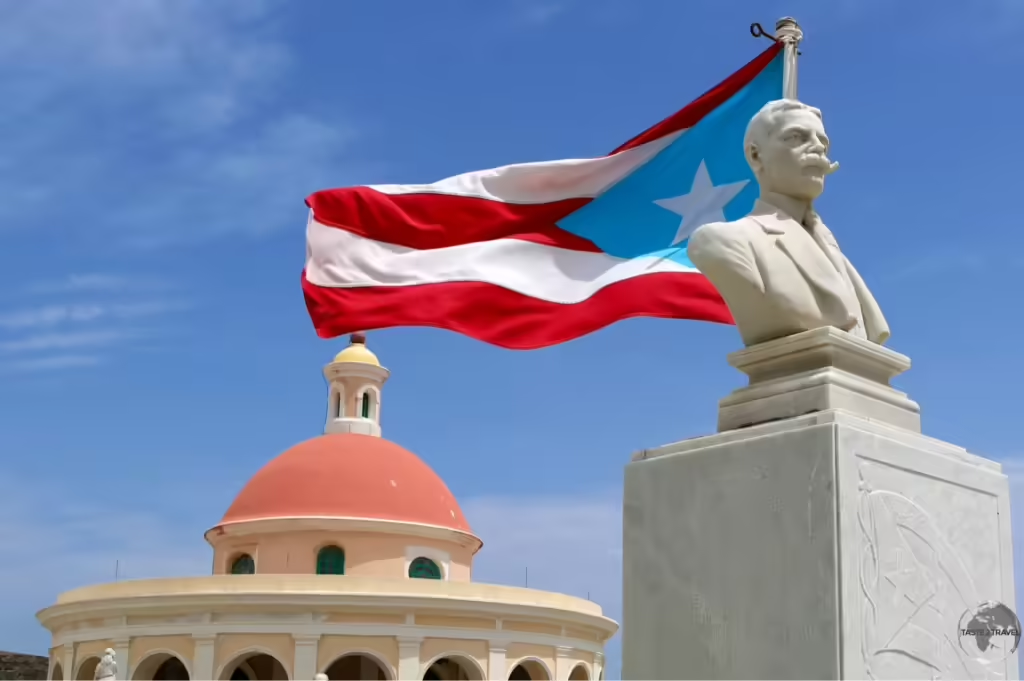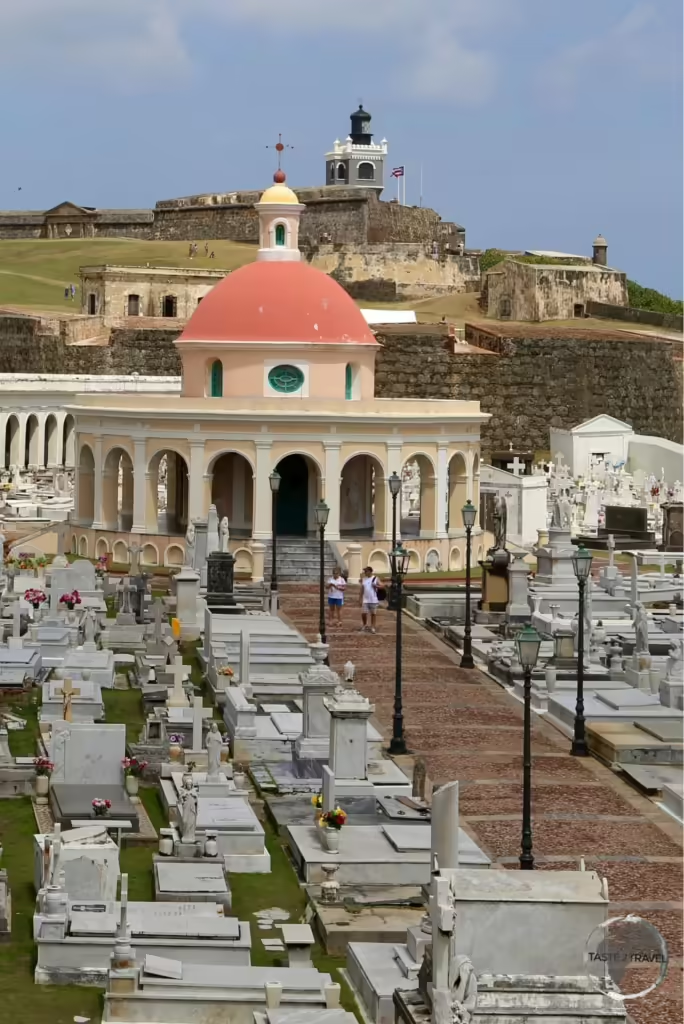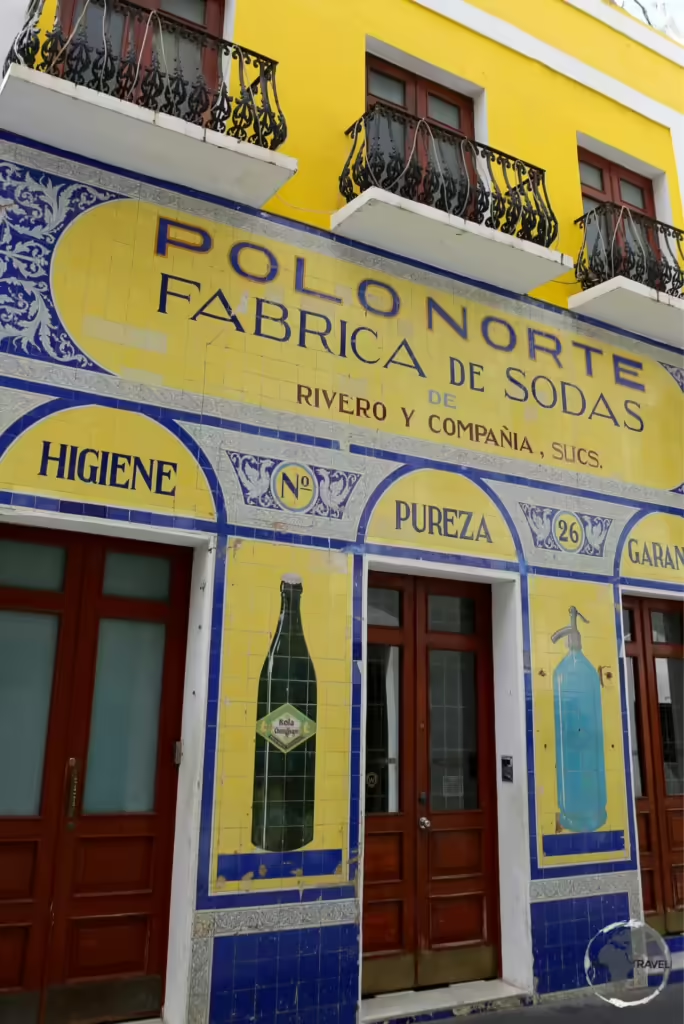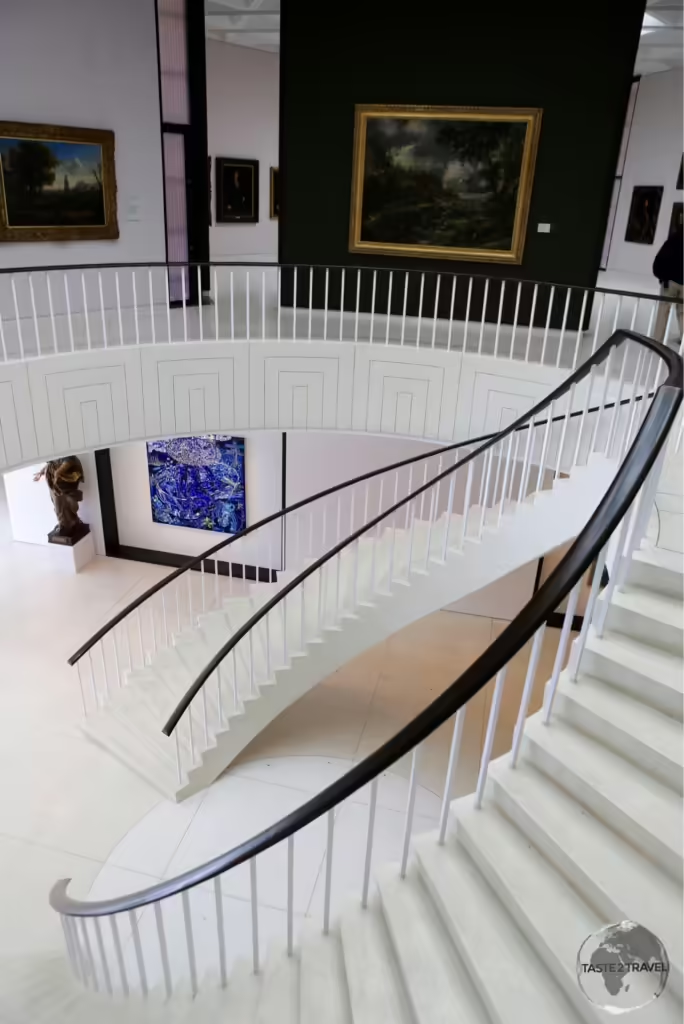Puerto Rico Travel Guide
Welcome to the taste2travel Puerto Rico Travel Guide!
Date Visited: May 2015
Introduction
If you’re arriving in Puerto Rico from one of the smaller Lesser Antilles islands, you could be forgiven for thinking that you have landed on the U.S. mainland. As you fly in over the bustling capital of San Juan, you will see multi-lane freeways full of traffic, huge mega malls, giant sports stadiums and miles of busy golden-sand beaches.
Your gateway to the island will most probably be Luis Muñoz Marín International Airport (San Juan), the biggest and busiest airport in the Caribbean. It all feels like Florida but it’s not – you are 2,000-km to the southeast of Miami. Welcome to Puerto Rico!
Currently the island is an unincorporated territory of the United States, which according to the U.S. Supreme Court is “a territory appurtenant and belonging to the United States, but not a part of the United States within the revenue clauses of the Constitution.” The basic question regarding it’s status is whether Puerto Rico should remain a U.S. territory, become a U.S. state or become an independent country. In a non-binding referendum in 2012, 61% of the population favoured full statehood.
Location
Puerto Rico is composed of one large island and several smaller islands. It is bordered on the north by the Atlantic Ocean, on the east by the Virgin Passage (which separates it from the Virgin Islands), on the south by the Caribbean Sea, and on the west by the Mona Passage (which separates it from the Dominican Republic).

Artwork at the Museo de Arte de Ponce.
Like all of it’s neighbours, Puerto Rico is a volcanic island with a mountain range running through it’s centre. The island lies directly in the path of trade winds, which deliver huge quantities of rainfall north of the ranges. Here you’ll find lush, tropical rainforests. Conditions south of the ranges are much drier – a place where the landscapes resemble African savanna and you have the opportunity to hike in the world’s largest dry-forest reserve.
History

The beautifully restored San Juan old town, which was founded by Spanish colonists in 1521.
Puerto Rico was originally settled by Arawak Indians who sailed up through the Lesser Antilles from present day Venezuela. The Arawak were eventually replaced by the Taino Indians – descendants of the Arawak and enemies of the Carib Indians (who conquered most of the Lesser Antilles islands). At the time of Columbus’ voyages, the Taino occupied most of the Greater Antilles (Cuba, Jamaica, Hispaniola and Puerto Rico).

Antique map of Puerto Rico
The first European to land on Puerto Rico was – no surprise – Christopher Columbus, during his second voyage in 1493. He claimed the island for Spain. Columbus named the island San Juan Bautista (English: Saint John the Baptist). Later, Spanish traders began calling the island Puerto Rico (English: Rich Port). Everyone seemed to prefer this name as it stuck.
One of the men who landed in Puerto Rico with Columbus was Juan Ponce de León. He was a true opportunist – looking for the Fountain of Youth and gold. While he was based on neighbouring Hispaniola, he heard reports from local Indians that the rivers of Puerto Rico were lined with gold deposits.
The Spanish crown gave approval for Ponce de León to conduct an exploration of the island, where he did find gold. Ponce de León was rewarded for his efforts by being made first governor of Puerto Rico, at which point he established a settlement (in 1508) named Caparra – located at present day old San Juan.

A colourful shop-front in old San Juan.
Ponce de León was still determined to find the Fountain of Youth, a quest which would lead him on an expedition to the coast of present day Florida, becoming the first European to land in the south-east of the United States.
He named Florida because of the flowery shrubs he found there and was later made it’s first military governor. Puerto Rico was the historic first gateway to the discovery of Florida, which opened the door to the settlement of the south-eastern United States.
San Juan became a key trading and warehousing centre for the Spanish empire in the new world. Large quantities of gold and silver from it’s South America colonies were stored here to await shipment onto Spain. Because of it’s importance and wealth, San Juan was considered a prize takeover target by other foreign powers.
To defend the city, the Spanish built many impressive fortifications, most of which still stand today. The most famous of English privateers – Sir Francis Drake – who had already organised a tactically brilliant attack on neighbouring Santo Domingo (Dominican Republic) attempted to invade and loot the city. He was repelled.
Further attacks by the English and Dutch were all repelled due to the strong defences of San Juan.

Doorways in the beautifully restored old town of San Juan.
Following it’s revolution, a young United States was keen to develop trading ties with anyone other than Britain. Due to its close proximity, the U.S. favoured trade relations with Puerto Rico. Trade between the two countries developed so quickly that the United States soon rivalled Spain in trade importance with the island.
After an earlier failed attempt at independence, Spain finally granted autonomy to Puerto Rico in 1897. This gave governing power to an island government. However, during the Spanish-American War of 1898, American troops invaded and Puerto Rico subsequently became a possession of the United States.
In 1917 Puerto Ricans were granted American citizenship and were provided protection under the Bill of Rights. In 1947 the American government gave Puerto Rico the right to elect its own governor with Luis Munoz Marin becoming the first elected governor.
In 1950 Puerto Rico was authorised by the United States Congress to draft its own constitution. Finally on July 25, 1953, Puerto Rico was transformed from an American territory to a commonwealth, a status it still retains.

Artwork depicting the Capitol Building of Puerto Rico.
Commonwealth status links Puerto Rico to the United States through common citizenship, common defence, common currency, and a common market. However, Puerto Ricans do not pay federal taxes, and are denied voting representation in the U. S. Congress. Almost without exception, the same federal rules and regulations apply to Puerto Rico as a commonwealth as to the States.
Flag

The flag of Puerto Rico.
The flag of Puerto Rico consists of five stripes that alternate from red to white. Three of the stripes are red, and the other two are white. To the left, on the hoist side, is a light blue triangle that houses one white five-pointed star.
Born at a time of revolution in the 1890’s, each part of the flag has its own meaning. The three red stripes represent the blood from those who fought for independence. The two white stripes represent the victory and peace that they would have after gaining independence. The white star represents the island of Puerto Rico, while the blue represents the sky and blue coastal waters. The triangle represents the three branches of government.
It’s no mistake the the flag of Puerto Rico is identical in design to the Cuban flag (shown below), except that the colours are inverted. The revolutionaries who designed the Puerto Rican flag were ‘brothers-in-arms‘ with their Cuban counterparts, especially Jose Marti, who was impressed with the new design.

The flag of Cuba.
Currency

The US Dollar.
It goes without saying that as a part of the US Commonwealth, the official currency of Puerto Rico is the US dollar.
ATM’s are plentiful, making Puerto Rico a great place to stock up on dollars if you are heading to other Caribbean nations which use the dollar (and where ATM’s are scare and bank queues are long).
Piña Colada

A commemorative plaque, celebrating the creation of the Piña colada, at the Barrachina Restaurant in San Juan old town.
The name piña colada literally means “strained pineapple”, a reference to the freshly pressed and strained pineapple juice used in the drink’s preparation.
As to the creation of the famous drink, there are two competing claims, both from San Juan:
1. Ramón Portas Mingot claims to have created the drink in 1963 while working as a bartender at the Barrachina Restaurant in old San Juan. The restaurant stands by his claim to this day and has installed a marble plague by the main entrance commemorating the fact.
2. Ramón ‘Monchito’ Marrero Pérez, a bartender who worked at the Caribe Hilton Hotel’s Beachcomber Bar in San Juan, claims to have invented the drink in 1954.
Either way – the Piña Colada has been named the national drink of Puerto Rico and is celebrated each year on the 10th of July during Piña Colada Day.
Piña Colada Recipe

Puerto Rico is the birthplace of the famous Piña colada.
There are many ways to prepare a Piña Colada but the original recipe used by Monchito at the Caribe Hilton was:
- Mix 3 ounces of coconut cream, 6 ounces of pineapple juice and 11⁄2 ounces of white rum into a blender with crushed ice, and blend until smooth.
- Pour into chilled glass, garnish with pineapple wedge.
Sightseeing
San Juan

The colourful and historic old town of San Juan has been beautifully restored.
With a population of almost 400,000 – San Juan is the capital and most populous city on Puerto Rico.
The history of the city starts with Columbus, who landed here during his second voyage to the Americas in 1493. The first settlement was made in 1508 by it’s first governor – Juan Ponce de León who called the settlement Caparra.
Due to defence reasons, the original settlement was relocated in 1521 by Juan Ponce de León, and the settlement was renamed City of Puerto Rico (Rich Port). Sometime during the 1520’s, confusion over the names led to a switch, the island took the name of Puerto Rico and the town became San Juan.
San Juan is the second oldest European-founded city in the Americas (after Santo Domingo, Dominican Republic). San Juan is the oldest city under U.S. jurisdiction, but St. Augustine, on the coast of Florida – is the oldest city in the ‘continental‘ United States.
Old San Juan has undergone extensive renovations and has a wealth of attractions to explore. It is one of the more interesting and charming cities in the Caribbean. In order to visit all the sites and indulge in some of the fine restaurants, bar and cafés you will need a few days.
The sites of the old town can be easily covered on foot, with the many pedestrian streets and green squares making strolling enjoyable.

The very photogenic old town of San Juan.
The following sites are located within old San Juan:
Old San Juan

Colourful houses line the streets of old San Juan.
The old town is located on an island along the Atlantic coast and is connected to the rest of the city by three bridges. The old town was registered as a Historic Site in 1949, allowing the preservation of historic buildings and other fortifications and putting a halt to any new development.
With its abundance of shops, historic monuments, museums, cafés, restaurants and tree-shaded plazas – the beautifully restored old town is today one of the most pleasant in the Americas.
Castillo San Felipe del Morro
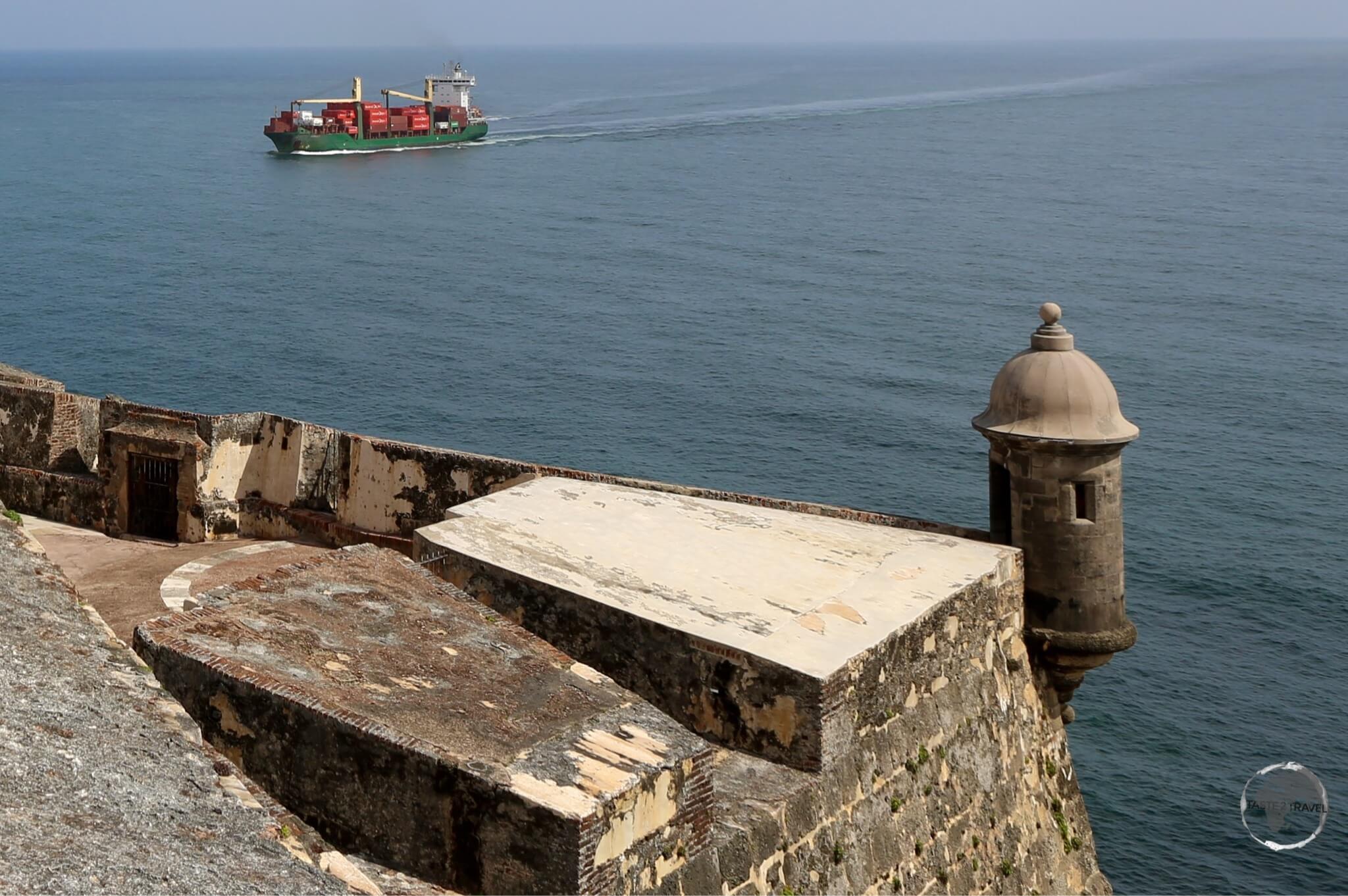
Castillo San Felipe del Morro guards the entrance to San Juan harbour.
Also known as Fuerte San Felipe del Morro or Morro Castle, is a 16th-century citadel located at the entrance to San Juan harbour. The castle has been designated a UNESCO World Heritage site and was the scene of many battles waged over the centuries, the last being between Spain and America during the Spanish-American war in 1898.
Today the castle is administered by the U.S. National Parks service who have installed static displays to allow visitors to follow their own private tour.
Castillo San Cristóbal

Colonial-era graffiti at San Cristobal fort in San Juan.
Located a short walk along the coast from Morro Castle is this second fortification, also known as Fort San Cristóbal. It was built by Spain to protect against land based attacks, something the English had managed to successfully achieve prior to the building of San Cristóbal.
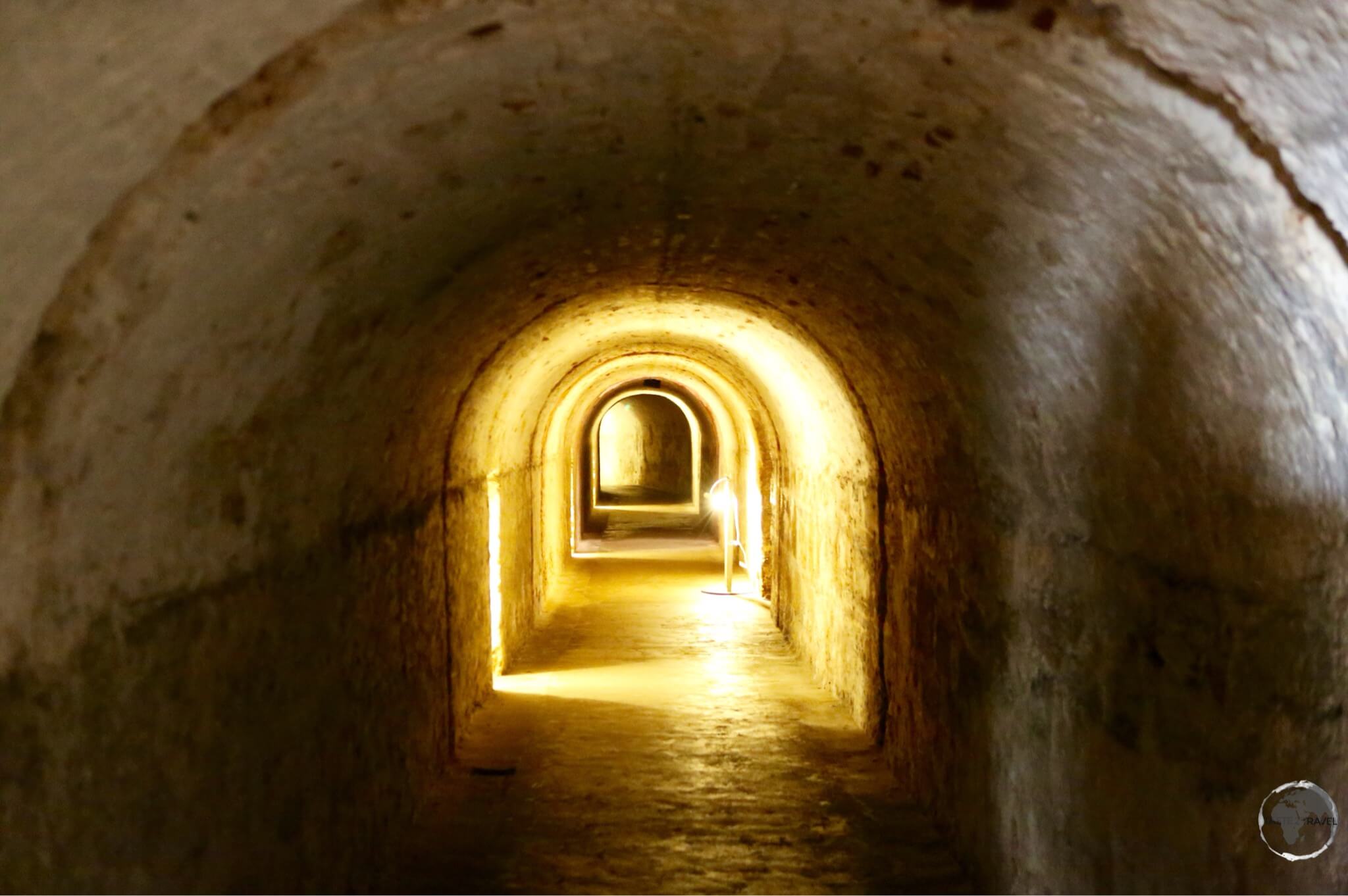
Inside one of the tunnels underneath San Christobal fort in San Juan.
The fort is the largest built by the Spanish in the new world and once completely encircled the old town.
Santa Maria Magdalena De Pazzis Cemetery

Santa Maria Magdalena De Pazzis Cemetery in San Juan.
A beautiful cemetery set in a stunning seaside location, a short walk from Morro castle. You can access the grounds by walking through the adjacent tunnel.
Plaza de Armas
Originally designed to serve as the main square for the city. The City Hall is located on the north side of the square.
Casa Blanca
Built in 1521 and located in the heart of the old town, this historic home was the first fortification for San Juan and was built to serve as the residence of the first governor – Juan Ponce de León. Today it is open to visitors as a museum, containing a collection of 16th and 17th century artefacts.
La Fortaleza
Now the official residence of the Governor of Puerto Rico, this was originally built as a fortress to defend the harbour from attack. It is today the oldest executive mansion in continuous use in the New World. Free guided tours are held hourly.
Restaurant Barrachina
Located in old San Juan, one block from La Fortaleza, this is the restaurant where it is claimed the world famous piña colada was created by Don Ramon Portas Mingot in 1963. It’s a good place to take timeout from a busy day of sightseeing and relax over a cool, refreshing piña colada.
For more on this, please see the ‘Piña Colada‘ section above.
Museo de las Americas
Located a short walk from Morro castle, this large museum is housed in a former army barracks and presents exhibits from pre-Columbian to modern art from various countries of the Americas.
San José Church
Located in the heart of the old town and constructed between 1532 and 1735, this is one of the oldest structures on the island. Juan Ponce de León, was buried in the crypt of the church from 1559 to 1836, when his remains were exhumed and later transferred to the Cathedral of San Juan Bautista.
Cathedral of San Juan Bautista

Virgin of Providence, Cathedral of San Juan Bautista, San Juan.
Originally constructed from wood in 1521 and later destroyed by a hurricane, this cathedral is one of the oldest buildings in San Juan and is the second oldest cathedral in the Americas. Juan Ponce de León is buried here.
Paseo de la Princesa
This tree-lined walkway connects the old town with the waterfront. On the weekends there is a market here.
Pigeon square
If your idea of fun is being pooped on by thousands of excited pigeons then this is the place for you. Located in the heart of the old town at the end of Calle del Cristo, vendors will happily sell you a bag of pigeon food so you can have your photo taken covered in a cloak of pigeons.
The following sites are located outside of old San Juan:
Capitol Building of Puerto Rico

View of the dome inside the Capitol Building, San Juan.
Located outside the walls of Old San Juan, the Capitol building is home to the Legislative Assembly, composed of the House of Representatives and Senate. You are free to enter and tour the building.
Puerto Rico Museum of Contemporary Art

Artwork at the Museum of Contemporary Puerto Rican Art, San Juan.
Located outside the old town in the suburb of Santurce, this museum showcases contemporary Puerto Rican art.
Museum of Art of Puerto Rico
Located outside the old town in the suburb of Santurce, this museum is housed in a former municipal hospital and features displays by local artists.
Beaches
San Juan has some of the finest beaches of any metropolitan area in the world. A good strategy is to base yourself close to one of the beaches so you can cool off after a long day of sightseeing in the old town.
Around the Island
Ponce
With a population of almost 200,000, Ponce is Puerto Rico’s second largest city after San Juan.
Located on the south-west coast, two hours drive from San Juan on a fast multi-lane expressway, Ponce makes for a nice escape from the capital.
The city is known by several names: La Perla del Sur (Pearl of the South) or La Ciudad de los Leones (City of Lions). The old town contains many beautiful neo-classical buildings and facades, all of which are slowly being renovated.
Sites include:
Museo de Arte de Ponce

A highlight of Puerto Rico – the Museo de Arte de Ponce.
Housed in a modern building and without doubt the number one attraction in town – this is the largest art museum in the Caribbean and has also been called one of the best museums in the Americas. There is a good onsite café for lunch.

A highlight of Puerto Rico, the incredible Museo de Arte de Ponce.
Parque de Bombas

It’s hard to miss the very striking ‘Parque de Bombas’ in downtown Ponce.
This striking historic firehouse is located at the Plaza Las Delicias, in the heart of the old town. The building once housed the city’s fire station but is now a museum.
Museo de la Historia de Ponce
Housed in an historic casa in the old town, this museum provides an overview of the history of the city.
Ponce Historic Zone
La Zona Histórica de Ponce is an historic district covering the historic downtown area. The centre contains buildings and structures with architecture that date to the late nineteenth and early twentieth centuries. It’s a pleasant place to spend some time strolling the quiet streets.
Castillo Serralles
There is just one rum of choice in Ponce and much of Puerto Rico – Don Q. The distillery has been owned for generations by the very prominent Serralles family. Castillo Serralles, an elegant Spanish revival castle built in the 1930’s, is the former family home but is today open to the public who can view the opulent rooms on a guided tour. The house is located on a hillside a short drive out of town.
Guanica

Hiking trail through the Guanica dry forest.
Located on the southwest coast, a short drive west of Ponce, Guanica is the town where historians believe Christopher Columbus first made landfall on Puerto Rico. It is also the town where American troops first invaded during the Spanish-American war in 1898.
While Guanica is a popular beach-side town, the main attraction for visitors is the opportunity to hike in the 10,000 acre Guanica Dry Forest. The forest is the largest remaining tract of dry forest in the world and exists because Guanica lies in a rain shadow. There are many kilometres of walking trails but the heat can be punishing so best to hike early or late in the day and bring at least 2 Litres of water.
Nearby Guanica is Parguera Phosphorescent Bay, where millions of luminescent dinoflagellates light up in the waters of the bay when disturbed by movement. Boat tours are run in the evening with crew members jumping into the dark waters of the bay to help ‘disturb’ the tiny marine life. When disturbed the tiny creatures produce electric-blue sparks of chemical light, lighting up the water.
Rincon
Located in the northwest corner of the island, Rincon is a popular beach-side municipality. Locals flock here on weekends to swim at the golden-sand beaches and watch the spectacular sunsets.
Arecibo (Permanently Closed)

It’s not surprising that the Arecibo observatory has featured in a James Bond film.
Update (June 2024):
Four years ago one of the most iconic telescopes in the world came crashing down on itself.
The Arecibo telescope—located in Arecibo, Puerto Rico—was the world’s largest single-dish telescope for most of its more than half-century of existence.
A series of cable failures caused the telescope’s 817-metric-ton receiver platform to collapse onto the dish below on December 1, 2020, putting the telescope out of commission.
The National Science Foundation (NSF)—which owns and finances the Arecibo Observatory—announced that it would not be funding the telescope’s reconstruction.
It is now permanently closed.
Located in the northwest of Puerto Rico, Arecibo was home to the Arecibo Observatory, the main attraction being the huge radio telescope.
Until May 2016, the 305-metre diameter telescope was the world’s largest single-aperture telescope. China now claims the #1 title with it’s new 500-metre diameter telescope.
The climatic scenes for the 1995 James Bond film ‘Golden-Eye‘ were filmed at the observatory.
Following a catastrophic incident in 2020, the observatory is now permanently closed.
Accommodation
There is no shortage of accommodation options on the island. All the usual American hotel chains are well represented and bargains can be found using online booking sites such as booking.com
In San Juan you have the choice of staying in a stylish guest house in the beautiful old town or in one of the quieter beach-side neighbourhoods. I stayed beach-side at the modern, charming and well designed Dream Inn PR. This inn – which is owned by a friendly, enthusiastic couple – is located on a main road with easy access to buses, restaurants and bars and a short walk from sandy Ocean Park beach.
A good hotel option on the southwest coast is the Costa Bahia Hotel & Convention Center, located next to the expressway in the town of Guayanilla, the hotel provides easy access to the sites around Ponce and Guanica.
Eating Out

Fresh pasta being prepared in old San Juan.
In this U.S. territory there is no shortage of places to eat out. You have all of the regular U.S. chain restaurants plus lots of local dining options.

Obama being served at Kasalta.
Source: Kasalta.com
A great dining institution in San Juan is the Kasalta Bakery. Located almost across the road from Dream Inn PR, this is the place Obama chose to eat at when he visited San Juan. The bakery is open from early morning for breakfast until late in the evening.
There are many fine restaurants and bars within the walls of the old town.
Visa Requirements
Some nationalities require visas for Puerto Rico – check your visa requirements prior to arrival.
Getting There
By Air
International flights arrive at Luis Muñoz Marín International Airport, which is located 5-km from downtown San Juan. The airport has the distinction of being the busiest airport in the Caribbean region, serving more than 4 million passengers a year. The airport serves as a gateway to the Caribbean islands.
The following airlines provide international connections:
- Air Antilles Express – services to Martinique, Guadeloupe, St. Maarten
- Air Canada – seasonal service to Toronto (Pearson)
- Air Europa – services to Madrid
- Air Flamenco – services to Culebra, Vieques
- Air Sunshine – services to Anguilla, Dominica, Nevis, St. Maarten, St. Thomas, Tortola, Vieques, Virgin Gorda
- American Airlines – services to Charlotte, Chicago (O’Hare), Dallas/Fort Worth, Miami, New York (JFK), Philadelphia
- Avianca – services to Bogotá
- Cape Air – services to Culebra, Mayagüez, St. Croix, St. Thomas, Tortola, Vieques, Virgin Gorda
- Condor – services to Frankfurt
- Copa Airlines – services to Panama City
- Delta Air Lines – services to Atlanta, New York (JFK)
- Dynamic Airways – services to Los Angeles
- Iberia – seasonal service to Madrid
- Insel Air Aruba – services to Aruba
- InterCaribbean Airways – services to Providenciales, Dominican Republic (Punta Cana), Tortola
- JetBlue Airways – services to Boston, Chicago (O’Hare), Fort Lauderdale, Hartford, New York (JFK), Newark, Orlando (MCO), Dominican Republic (Punta Cana), Dominican Republic (Santo Domingo), St. Croix, St. Thomas, Tampa, Washington (National)
- LIAT – services to Antigua, Dominica, Tortola
- National Airlines – services to Orlando/Sanford
- Norwegian Air Shuttle – services to Copenhagen, London (Gatwick), Oslo (Gardermoen), Stockholm (Arlanda)
- Seaborne Airlines – services to Anguilla, Antigua, Dominica, Martinique, La Romana, Nevis, Guadeloupe, Dominican Republic (Punta Cana), Dominican Republic (Santo Domingo), St. Croix, Saint Kitts, St. Thomas, St. Maarten, Tortola
- Southwest Airlines – services to Baltimore, Fort Lauderdale, Houston (Hobby), Orlando (MCO), Tampa
- Spirit Airlines – services to Fort Lauderdale
- Sun Country Airlines – services to Fort Myers, Minneapolis/St. Paul
- Tradewind Aviation – services to Anguilla, Nevis, Saint Barthélemy
- United Airlines – services to Chicago (O’Hare), Houston (Intercontinental), Newark, Washington (Dulles)
- Vieques Air Link – services to Vieques
- Volaris – services to Cancún
- WestJet – services to Toronto-Pearson
- Winair (operated by Air Antilles Express) – services to St. Maarten
By Sea
Ferries
There is a regular scheduled international ferry service between San Juan (Puerto Rico) and Santo Domingo (Dominican Republic), which is operated by America Cruise Ferries. The service runs three times a week with the crossing taking 14-hours. Check this website for current schedule and fares.
Caribbean Fantasy (also operated by America Cruise Ferries) offers a weekly ferry service between Mayaguez (west coast of Puerto Rico) and Santo Domingo (Dominican Republic). The ferry sails every Wednesday, returning the following Tuesday (giving return passengers one week to enjoy the Dominican Republic). Crossing time is 12-hours.
Cruise Ships
Visiting cruise ships dock directly in front of the old town in San Juan. No need to take a taxi anywhere – everything is a short walk from the dock.
Getting Around
Metro

A map of the San Juan metro.
The San Juan metro, also known as Tren-Urbano, was the first metro system in the Caribbean — a second has recently opened in Santo Domingo (Dominican Republic). The fully automated metro covers a distance of 17-km and includes 16 stations.
Buses
Puerto Rico has an abundance of buses, from the free shuttle buses that ply the streets of old San Juan to regular urban buses that crisscross the capital. All bus times are available from the free trenurbano app.
Taxis
Metered taxis are available in San Juan but local cabbies are reluctant to use the meters, instead offering you a flat fee to your destination. Best to always negotiate in advance.
Car
Once you leave San Juan, public transport options become more limited. If you wish to explore the island beyond the the capital it’s best to hire a car. There are plenty of agents at Luis Muñoz Marín International Airport and in downtown San Juan. Rental rates are some of the cheapest in the Caribbean.
That’s the end of my Puerto Rico Travel Guide.
Safe Travels!
Darren
Follow me on Instagram:
[instagram-feed feed=1]
Further Reading
Other travel reports from the Caribbean region include:
Puerto Rico Travel Guide Puerto Rico Travel Guide Puerto Rico Travel Guide Puerto Rico Travel Guide Puerto Rico Travel Guide Puerto Rico Travel Guide Puerto Rico Travel Guide Puerto Rico Travel Guide Puerto Rico Travel Guide Puerto Rico Travel Guide



